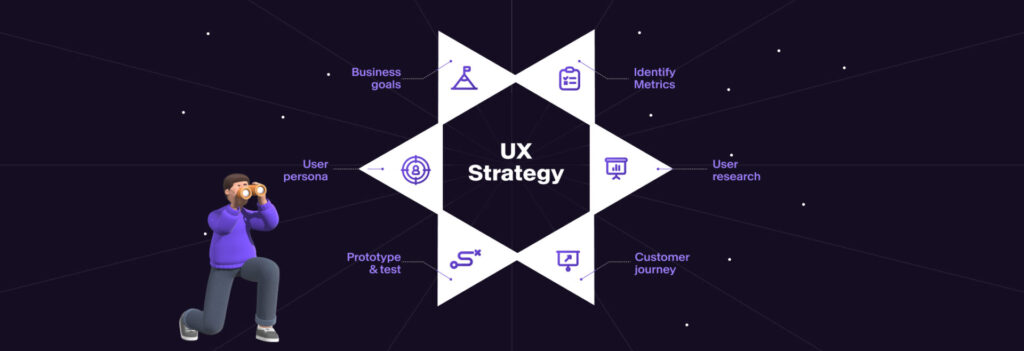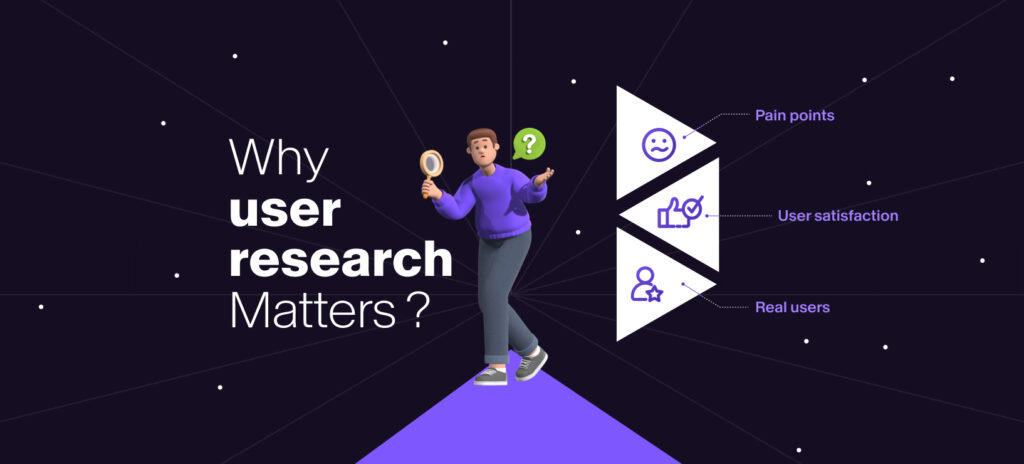Stuti Mazumdar - December 2024

Why User Research Matters in UX

1. Defining Business Goals and UX Objectives
For example, let’s imagine that run an athleisure brand, launching a new website with a goal to boost customer engagement across the exploration and purchase journeys. You might focus on embedding personalized in every aspect of the product exploration journey of an average user on the website. And only through thorough user interviews can you achieve qualitative insights into the kind of personalization users want. Or, if the objective is to expand into a new market segment, user research would then focus on identifying the needs and preferences of these potential users.
Ready to start research that would define your objectives? Here are some questions that can help you begin:
- What problems do people most commonly face when using alternatives to the digital product?
- What specific user behaviors will indicate success?
- How does the product solve current user pain points stated above?
With objectives now in place, you can move on to conducting research.
2. Conducting User Research to Gather Insights from Real Users
User research methods can vary based on your digital product and research strategy, but for new product development, combining qualitative and quantitative research yields a well-rounded view of user expectations from your target audience. Here are some popular research methods most commonly used by organizations:
- User Interviews: Interviewing real users offers deep insight into their pain points or frustrations, motivations, and needs as a user of a digital experience. Ensure that all your questions are open-ended, and not leading, to help you capture nuanced information.
- Surveys: These are great for gathering quantitative feedback from a large pool of users. It mostly helps uncover trends and broad-level information related to user satisfaction and preferences.
- Competitive Audits: Assessing competitors’ products and services provides insights into industry standards and commonly occurring gaps that your product can address.
- Usability Tests: Often occurring as a research practice post designing the experience, UX researchers observe users interacting with prototypes to identify issues they face on an interface. A thorough report is generated and used to optimize the design process based on real-world use.
Incorporating these research methods at various stages of development is essential. Not only do they validate initial ideas, but they also help ensure that design decisions enhance the user experience, reducing friction points that could drive users away from using your digital product.
3. Creating User Personas That Represent Your Target Audience
With raw data available from the research conducted, you can start creating user personas—realistic representations of the user cohorts that would use your digital product. These personas encapsulate the goals, behaviors, and pain points of all the various user segments interacting with the experience, making it easier to design with specific people in mind rather than a generic audience.
For instance, if the primary persona for the product is a time-pressed corporate professional looking for efficiency in a SaaS product, crafting the design strategy with this person in mind would be a whole lot easier than designing for “working professionals in the industry”. Designers would, thus, be able to prioritize designing a streamlined user interface with quick access to core features.



